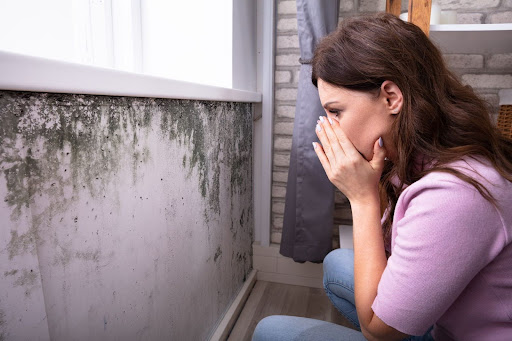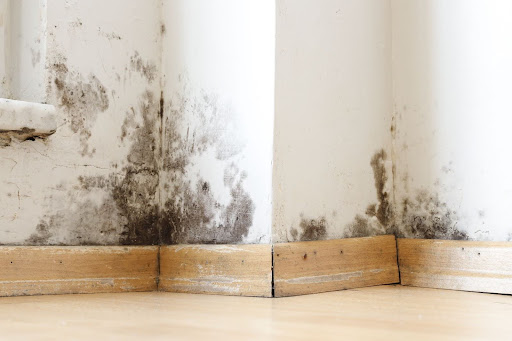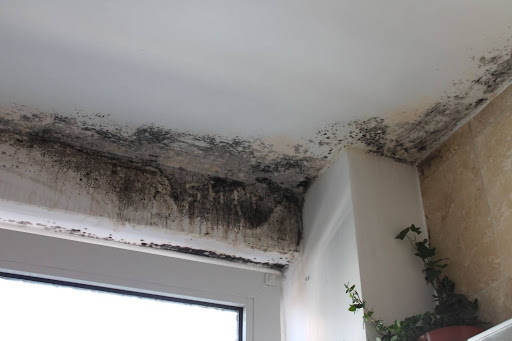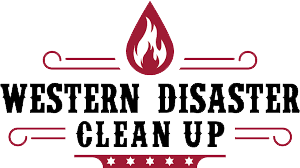Mold, though often hidden from plain sight, has a profound impact on your home and health. Recognizing the signs of mold infestation is crucial, as early detection helps prevent extensive damage and potential health risks.
In this blog, we’ll provide you with a comprehensive guide to recognizing the signs that indicate the need for professional mold remediation. By understanding these signs, you can take proactive measures to safeguard your home and well-being.
Common signs of mold infestation
Mold is an often hidden intruder that thrives in damp, dark, and hard-to-reach places. From visible mold growth to musty odors and health symptoms, understanding these indicators is essential for maintaining a safe and mold-free living environment.

Visible mold growth
The most striking and evident indication of a mold problem in your home is the presence of visible mold growth. Mold tends to manifest as discolored patches on various surfaces, exhibiting a spectrum of colors, from black, green, or brown to white or yellow. These unsightly patches can emerge on walls, ceilings, floors, and even in concealed areas such as behind wallpaper or beneath carpets.
As you go about your daily routines, stay observant. Pay close attention to any unusual spots or discolorations within your living spaces, as these could be early signals of mold growth taking hold.
Musty odors
Mold has a rather unmistakable calling card — a distinctive and unpleasant odor that’s described as musty or earthy. When you catch a whiff of these odors permeating your home, particularly in areas with insufficient ventilation or following episodes of rain or increased humidity, it’s a clear sign that further investigation is warranted.
These musty odors serve as a valuable early warning system for mold, even before any visible signs become apparent. So, if you’re met with these distinctive smells, it’s prudent to take proactive steps to address the potential mold issue as quickly as possible.
Water damage
Leaks, floods, or plumbing mishaps — oh my! Water damage sets the stage for mold to flourish. If you’ve encountered any water-related issues in your home, such as a persistently leaking roof or a burst pipe, you’ve unwittingly created the ideal breeding ground for mold.
In such cases, the conditions become ripe for mold infestation. Consequently, swift and effective intervention to rectify water damage is paramount in preventing mold from establishing a foothold in your living space.
Allergic reactions
Mold has the unpleasant ability to provoke allergic reactions, especially in individuals with heightened sensitivities. If you or your loved ones find yourselves grappling with symptoms like incessant sneezing, a perpetually runny nose, itchy or watery eyes, persistent coughing, or unexplained skin rashes while indoors but not outdoors, it’s time to consider mold as a potential antagonist.
What makes these allergic reactions even more intriguing is their penchant for intensifying in areas with higher concentrations of mold. So, if you suspect mold might be the source of your discomfort, it’s crucial to address the issue promptly.
Health symptoms
Beyond allergies, prolonged mold exposure can manifest in more severe health issues. Certain individuals may find themselves grappling with respiratory problems, including unexplained wheezing, an uncomfortable tightness in the chest, or the exacerbation of existing asthma symptoms. Others may experience persistent headaches, inexplicable fatigue, or chronic sinus congestion.
If you detect any of these unusual health symptoms, and they appear to alleviate when you’re away from your home, mold may be an underlying culprit worth investigating.
Structural damage
The impact of mold extends beyond health concerns; it also compromises the structural integrity of your residence. Mold has a voracious appetite for organic materials, including wood and drywall. This weakens them over time.
If you’ve noticed any telltale signs of structural damage, such as crumbling drywall, warped surfaces, or ceilings that seem to sag, it’s entirely possible that mold is silently contributing to these issues. Recognizing these subtle hints is crucial for taking action before the structural damage becomes extensive and costly to repair.

Investigating the signs
When it comes to detecting mold in your home, a visual inspection is your first line of defense. Begin by carefully examining areas where mold is most likely to thrive, such as damp or humid spaces, poorly ventilated areas, and places with a history of water damage.
Mold requires moisture to thrive, so assessing the moisture levels in your home is crucial for mold detection. Investigate areas with a history of water damage, such as leaky roofs, plumbing issues, or flooding.
Moisture meters or hygrometers are valuable tools for measuring humidity levels in your home. High humidity creates favorable conditions for mold growth, so be particularly vigilant in areas with excessive moisture.
Surfaces and materials that are porous are especially susceptible to mold. Unfortunately, that includes drywall, carpet, ceiling tiles, and even lumbar. Since many of these materials are hidden underneath aesthetic layers like paint, wallpaper, or other flooring, it can be difficult to identify until after the damage has already occurred.
What’s even more important to note is that these materials are usually not salvageable over mold sets in. They must be removed completely and disposed of properly so they don’t contaminate other areas.
Once you remove the damaged materials, be sure to clean and disinfect the surrounding areas and surfaces. This step is essential to ensuring that any remaining spores are eliminated completely before they have a chance to spread.
If you are uncertain of how to get rid of mold-damaged materials or have concerns about future contamination, it’s always a good idea to bring in the professionals.
When to seek professional help
Knowing when to seek professional help makes all the difference in the mold remediation process.
DIY vs. professional remediation
Making the decision between a DIY approach and seeking professional mold remediation hinges on understanding the extent of the problem at hand.
For minor mold issues, those confined to a small surface area (typically less than about 10 square feet), homeowners with a degree of confidence may opt for a do-it-yourself approach. This would involve using readily available mold removal products and following established safety guidelines.
However, it’s crucial to note that when mold infestations become more extensive or severe, or when mold hides within walls, ductwork, or other hidden spaces, professional intervention becomes imperative. These scenarios demand the expertise, equipment, and experience that professionals bring to the table to ensure thorough and safe mold removal.
Benefits of professional mold remediation
The decision to enlist professional mold remediation services comes with a host of benefits. Foremost, these experts bring a wealth of knowledge, specialized equipment, and extensive experience to the table, ensuring the effective and safe removal of mold infestations. Their expertise allows for a precise assessment of the mold’s extent, identification of the specific mold strains involved, and the implementation of suitable containment and removal strategies.
Additionally, professionals excel in addressing the root causes of mold proliferation, such as identifying and rectifying leaks or humidity imbalances that fuel mold growth.
Perhaps most importantly, opting for professional mold remediation safeguards your well-being and that of your loved ones. Professionals adhere to strict safety protocols and utilize protective gear to minimize any exposure to hazardous mold spores, prioritizing health and safety throughout the process.
Choosing the right mold remediation expert
The process of choosing the ideal mold remediation expert requires careful consideration to ensure the success of your remediation project. It’s essential to prioritize professionals with relevant certifications and licensing, as these credentials signify their dedication to adhering to industry standards and regulations.
Additionally, inquire about their references and reputation in the field; a well-established mold remediation company should readily provide testimonials from contented clients. Check customer reviews to see how past clients felt about their work to give you an idea of what hiring them would be like.
Be sure to ask about any guarantees they provide for their work. By conducting thorough due diligence and selecting the right professionals, you pave the way for a meticulous and effective mold remediation process that ultimately restores your home to a safe and healthy living environment.

Western Disaster Cleanup swiftly takes care of mold and more!
Safeguarding your home and ensuring a healthy living environment hinges on your ability to recognize the signs of mold infestation. Whether you’ve spotted visible mold growth, noticed musty odors, identified moisture-related concerns, or experienced unusual health symptoms, swift action is imperative.
While minor mold issues may be manageable through DIY efforts, it’s essential to acknowledge that larger or more severe infestations demand professional intervention.
Western Disaster Cleanup is your trusted partner in comprehensive mold remediation services. Our experienced team is well-equipped to assess, contain, and safely remove mold from your property. By reaching out to us, you not only ensure effective mold removal but also protect both your property and the well-being of your loved ones.
Don’t hesitate to contact Western Disaster Cleanup when faced with mold-related challenges; we are here to restore your home to a mold-free and healthy state. Your safety and peace of mind are our top priorities.

